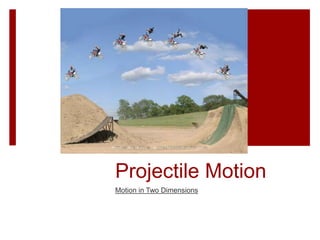projectile motion1.ppt
•Als PPT, PDF herunterladen•
0 gefällt mir•152 views
science
Melden
Teilen
Melden
Teilen

Empfohlen
Empfohlen
Weitere ähnliche Inhalte
Was ist angesagt?
Was ist angesagt? (20)
Location of the Philippines using coordinate system

Location of the Philippines using coordinate system
Properties of Compounds - Ionic, Covalent and Metallic

Properties of Compounds - Ionic, Covalent and Metallic
Ähnlich wie projectile motion1.ppt
Ähnlich wie projectile motion1.ppt (20)
projectile motion and memontum and equilibrium.ppt

projectile motion and memontum and equilibrium.ppt
Mehr von KimberlyAnnePagdanga1
Mehr von KimberlyAnnePagdanga1 (20)
M3_Digestion Interaction with other Organ Systems.pptx

M3_Digestion Interaction with other Organ Systems.pptx
M1_Lesson 1_How greeks know that earth is spherical.pptx

M1_Lesson 1_How greeks know that earth is spherical.pptx
Kürzlich hochgeladen
Kürzlich hochgeladen (20)
Chemical Tests; flame test, positive and negative ions test Edexcel Internati...

Chemical Tests; flame test, positive and negative ions test Edexcel Internati...
Feature-aligned N-BEATS with Sinkhorn divergence (ICLR '24)

Feature-aligned N-BEATS with Sinkhorn divergence (ICLR '24)
Forensic Biology & Its biological significance.pdf

Forensic Biology & Its biological significance.pdf
Call Girls Alandi Call Me 7737669865 Budget Friendly No Advance Booking

Call Girls Alandi Call Me 7737669865 Budget Friendly No Advance Booking
Kochi ❤CALL GIRL 84099*07087 ❤CALL GIRLS IN Kochi ESCORT SERVICE❤CALL GIRL

Kochi ❤CALL GIRL 84099*07087 ❤CALL GIRLS IN Kochi ESCORT SERVICE❤CALL GIRL
GUIDELINES ON SIMILAR BIOLOGICS Regulatory Requirements for Marketing Authori...

GUIDELINES ON SIMILAR BIOLOGICS Regulatory Requirements for Marketing Authori...
Justdial Call Girls In Indirapuram, Ghaziabad, 8800357707 Escorts Service

Justdial Call Girls In Indirapuram, Ghaziabad, 8800357707 Escorts Service
High Profile 🔝 8250077686 📞 Call Girls Service in GTB Nagar🍑

High Profile 🔝 8250077686 📞 Call Girls Service in GTB Nagar🍑
Nightside clouds and disequilibrium chemistry on the hot Jupiter WASP-43b

Nightside clouds and disequilibrium chemistry on the hot Jupiter WASP-43b
Labelling Requirements and Label Claims for Dietary Supplements and Recommend...

Labelling Requirements and Label Claims for Dietary Supplements and Recommend...
9999266834 Call Girls In Noida Sector 22 (Delhi) Call Girl Service

9999266834 Call Girls In Noida Sector 22 (Delhi) Call Girl Service
projectile motion1.ppt
- 1. Projectile Motion Motion in Two Dimensions
- 2. A Question to Begin At the instant a horizontally pointed cannon ball is fired, a cannonball held at the cannon’s side is released and drops to the ground. Which cannonball strikes the ground first, the one fired from the cannon or the one dropped?
- 3. What is a Projectile? Any object that continues in motion by its own inertia and is influenced only by the downward force of gravity (and air resistance) - an object dropped from rest is a projectile - an object thrown straight upward is a projectile - an object thrown upward at an angle to the horizontal
- 4. The path that the projectile follows is a parabola… the path is called its trajectory
- 5. Horizontal Motion If there is no force acting on an object, then it will continue moving at a constant speed in the same direction. - there will be no change in its velocity - distance will increase the same amount with each second
- 6. Free Fall Revisited An object in free fall is only acted on by gravity - Acceleration due to gravity is 9.8 m/s2 – distance covered increases with each second
- 7. Projectile Motion Combines Vertical Motion and Horizontal Motion The vertical motion of a projectile is not affected by its horizontal motion -meaning: The vertical motion of a projectile is identical to an object in free fall The horizontal motion of a projectile is not affected by its vertical motion - meaning the projectile will travel the same horizontal distance as it would if it were simply rolling on a flat surface in the absence of friction
- 8. Projectile Motion Combines Horizontal Motion and Vertical Motion The vertical and horizontal motion of a projectile are independent of each other
- 9. Horizontal Path Without Gravity Vertical Path
- 11. Projectile Motion Projectiles follow a parabolic trajectory Horizontal component along trajectory remains unchanged. Acceleration only occurs in the vertical component
- 13. Projectile Motion and Complementary Angles Different launch angles result in different horizontal distances traveled by the projectile Same range is obtained from two different launching angles when the angles add up to 90°. Object launched at an angle of 60 has the same range as if it were thrown at an angle of 30. - What launch angle would have the same range as a projectile launched at 20o?
- 14. Projectile Calculations Horizontal Distance d = v(t) Vertical Velocity Vf = Vi + gt For Projectiles Launched horizontally Horizontal Velocity vf = vi + at Vertical Distance d = vit + ½ gt2
- 15. Review What is the path of a projectile called? Trajectory
- 16. Review Is projectile motion one dimensional? No, it is 2 dimensional- vertical and horizontal
- 17. Review What force (s) is acting on the projectile? Gravity only
- 18. Review Which direction, horizontal or vertical has acceleration? Which direction, horizontal or vertical has constant speed? Vertical Horizontal
- 19. Review Two identical balls roll off the edge of a table. One leaves the table travelling twice the speed of the other. Which ball hits the floor first? Both hit the ground at the same time. The difference in horizontal velocity does not affect the vertical time.
- 20. Review At the instant a horizontally pointed cannon ball is fired, a cannonball held at the cannon’s side is released and drops to the ground. Which cannonball strikes the ground first, the one fired from the cannon or the one dropped? They hit at the exact same time
- 21. Draw vector arrows representing the vx and vy velocity components during the course of the motion. The length of the arrows should represent the magnitude of the velocity components.
- 22. Draw vector arrows representing the vx and vy velocity components during the course of the motion.